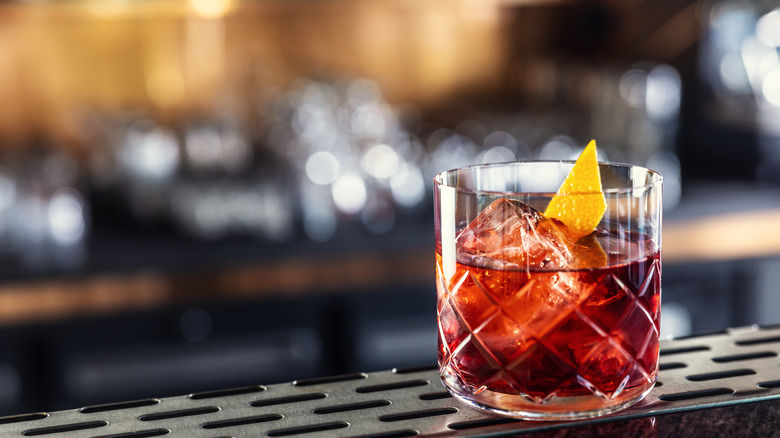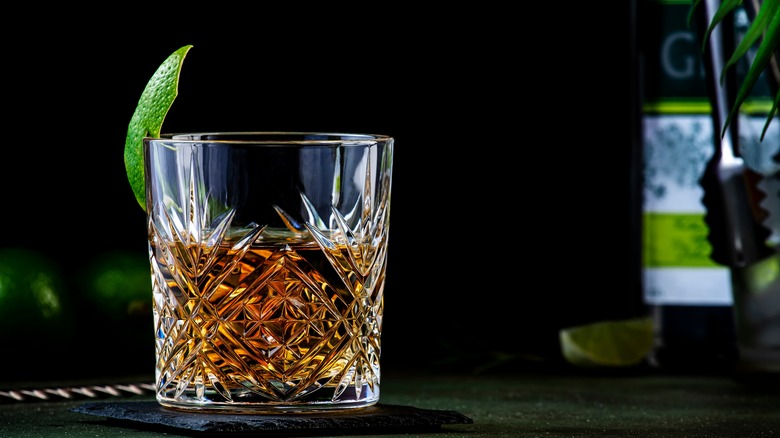How Did Negronis Become The Next It Cocktail? A Spirits Expert Weighs In
We may receive a commission on purchases made from links.
Modern mixology has come up with a long line of novel cocktails brimming with multiple ingredients, fancy techniques, and impressive presentations. However, there has been a revival of the classics in recent years. Tasting Table spoke with Molly Horn, chief mixologist and spirits educator at Total Wine & More, and she told us about how Negronis have become the next "it" cocktail. "I think a lot of it has to do with the public's evolving palates — in the '70s and '80s everyone wanted these super sweet cocktails, and now most people order cocktails with the tagline 'not too sweet'," Horn explained. "People in general are more open to and interested in cocktails that are more balanced, and the Negroni is a paragon of balance."
To refresh your memory on the contents of a Negroni, Tasting Table offers the classic three-ingredient Negroni recipe that's equal parts gin, vermouth rosso, and campari. The floral, vegetal flavor of gin paired with bitter campari and the botanical, bittersweet, and spicy notes of vermouth exhibit an elegant complexity. "It is also lower in ABV than many other classic cocktails as there is only 1 part that is full proof (40% alcohol) and the other two parts are both lower in alcohol, making it a more sessionable cocktail that many drinkers are leaning toward more often these days," says Horn.
Modern twists on the classic Negroni
The revitalized popularization of Negronis coincides with a creative modern mixology scene. Variations on the classic Negroni make interesting ingredient swaps that are just as refined and balanced. And who better to recommend the best twists on Negroni than a master mixologist and spirits educator like Molly Horn? She gave a diverse range of ideas: "I love the White Negroni, with Suze and Lillet Blanc, especially in the warmer months. I had a really delicious Espresso Negroni recently, and of course, who doesn't love a Mezcal Negroni?"
Our White Negroni from Dutch Kills replaces campari with Suze (a spicy liqueur with notes of vanilla) and vermouth with Lilet blanc, a fortified white wine with floral notes and a delicate sweetness. The recipe debuted in 2001 and gives you the same bitter profile as the classic with different tasting notes. The espresso Negroni simply adds either a shot of espresso, coffee liqueur, or a blend of both to the classic recipe. You can replace the floral or vegetal taste of gin with a smoky mezcal in a Negroni with an easy swap, using equal parts mezcal, sweet vermouth, and campari. Whether you try a variation or the classic Negroni for your next cocktail hour, no fancy equipment or mixology technique is required. Just add all three ingredients to a mixing glass or cocktail shaker like this Luckygoobo, stir with a spoon, and pour over a block of ice in a shallow Negroni cocktail glass, like this one from the History Company Store.

